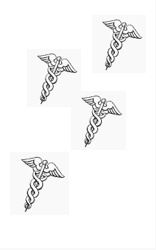By MATTHEW HOLT
Today is the kick-off of the vendor-fest that is HIMSS. Late last week on THCB, ONC director Karen De Salvo and Policy lead Jodi Daniel slammed the EMR vendors for putting up barriers to interoperability. Last year I had my own experience with that topic and I thought it would be timely to write it up. (I’ll also be in the Surescripts booth talking about it at 3.45 Monday)
I want to put this essay in the context of my day job as co-chairman of Health 2.0, where I look at and showcase new technologies in health. We have a three part definition for what we call Health 2.0. First, they must be adaptable technologies in health care, where one technology plugs into another easily using accessible APIs without a lot of rework and data moves between them. Second, we think a lot about the user experience, and over eight years we’ve been seeing tools with better and better user experiences–especially on the phone, iPad, and other screens. Finally, we think about using data to drive decisions and using data from all those devices to change and help us make decisions.

This is the Cal Pacific Medical Center up in San Francisco. The purple arrow on the left points to the door of the emergency entrance.

Cal Pacific is at the end of that big red arrow on the next photo. On that map there’s also a blue line which is my effort to add some social commentary. To the top left of that blue line in San Francisco is where the rich people live, and on the bottom right is where the poor people live. Cal Pacific is right in the middle of the rich side of town, and it’s where San Francisco’s yuppies go to have their babies.

Last year, on August 26, 2014 at about 1 am to be precise, I drove into this entrance rather fast. My wife was next to me and within an hour, we were upstairs and out came Aero. He’s named Aero because his big sister was reading a book about Frankie the Frog who wanted to fly and he was very aerodynamic. So when said, “What should we call your little brother?” She said, “I want to call him Aerodynamic.” We said, “OK, if he comes out fast we’ll call him the aerodynamic flying baby.” So he’s called Aero for short.

Thus began the Quest for Intra-Aero-Bili-ty –a title I hope will grow on you. The Bili part will become obvious in a paragraph or two.
Something had changed since we had been at Cal Pacific three years earlier for the birth of Coco, our first child.

If you look carefully at the top of Amanda’s head, there’s now a computer system. Like most big provider systems, Sutter–Cal Pacific’s parent company–has installed Epic and it’s in every room or on a COW (cart on wheels). Essentially we have spent the last few years putting EMRs in all hospitals. This is the result of the $24+ billion the US taxpayer (well, the Chinese taxpayer to be more accurate) has spent since the 2010 rollout of the HITECH act.Continue reading…
 Health Datapalooza once again lived up to its reputation as the liveliest and most eclectic health IT confabs of the year. Energetic and sleek young entrepreneurs mingled with government bureaucrats, academic types, consultants, current and former ONCers, a smattering of providers, app developers, data geeks, and patient advocates at this year’s conference, held in Washington D.C. June 1 to 3 with about 2,000 in attendance.
Health Datapalooza once again lived up to its reputation as the liveliest and most eclectic health IT confabs of the year. Energetic and sleek young entrepreneurs mingled with government bureaucrats, academic types, consultants, current and former ONCers, a smattering of providers, app developers, data geeks, and patient advocates at this year’s conference, held in Washington D.C. June 1 to 3 with about 2,000 in attendance. 


















